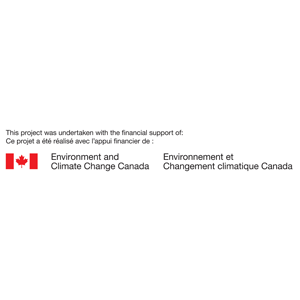The last two articles shared the importance of biodiversity and how selecting native plants can enhance biodiversity on one’s property. We hope we have inspired individuals and families in the biosphere region to rethink their garden and landscaping choices with native plants and wildlife in mind. But let’s face it, not everyone has the time, resources, or ability to plant a wildflower garden or source out keystone plant species. The third and final installment of the Homegrown Biodiversity series shares five hands-off tips for improving biodiversity at your home or cottage.
1. Choose Not to Mow

Mown lawns do not promote biodiversity. By choosing to stop mowing your lawn or by mowing a smaller area, you will not only save time, but you will also attract a greater diversity of insects, including pollinators. Over time you may wish to introduce some native species or alternatively, let them naturally move in from the surrounding environment.
If you need a grassy area for kids and/or pets, simply cut down on the size of the mown area. Choose part of your lawn to go wild and maintain only what is necessary (including your septic bed if you have a rural septic system). Even reducing how often you mow your lawn can increase plant and insect diversity, reduce the occurrence of pest species, and decrease greenhouse gas emissions if using a gas-powered lawnmower (read more here).
2. Leave the Leaf Litter

For millennia, before rakes and leaf blowers ever roamed the earth, leaves fell to the ground, decomposed, and returned nutrients to the soil. It’s now common to spend hours raking up leaves, bagging them, and sending them off to the landfill, disrupting the nutrient cycle and causing the release of greenhouse gases. Save yourself the time and energy of raking leaves and instead let the leaves lie where they fall. Organisms that use leaf litter for food, shelter, and nesting material will benefit greatly. For example, many moth and butterfly caterpillars rely on leaf litter as overwintering habitat before emerging in the spring.
If you must remove leaves from certain areas of your yard, rather than bagging them up and disposing of them, use them as mulch in garden beds or compost them on site. You can also help the mulching process along by hitting them with the lawn mower (if they fell in an area you’re still mowing!). Remember, those leaves are a fantastic natural fertilizer! If you’re worried about leaves matting, try removing half of the leaves to avoid matting but still benefit biodiversity.

3. Fight the Urge to “Tidy up”
While it’s nice to be neat and tidy in our homes, in nature, messy is best . The natural environment does not need us raking up leaves, picking up fallen branches, filling in wet spots, or moving rotting logs. All of these features – leaves, branches, pools, logs – contribute to habitat diversity and serve a meaningful purpose in the ecosystem. Aside from the spaces you regularly use (e.g., pathways, play areas for kids), try not to interfere with nature’s decorating. Those fallen branches form brush piles that provide wildlife with shelter from the elements and predators. The small, wet depressions known as vernal pools are critical habitat for species like the wood frog, and rotting logs are a salamander’s best friend.
4. Put the Chainsaw Away

While they don’t seem like much, dead standing trees, also known as snags, provide so much value to ecosystems.
- Home sweet home. The hollow cavities in dead standing trees make excellent homes for a variety of animals including birds, squirrels, and raccoons.
- Feeding frenzy. Wildlife looking for a meal can find a buffet of insects, mosses, lichen, and fungi that are all attracted to the dead wood.
- Lookout tower. Birds of prey use high branches of dead standing trees to scope out their next meal.
- Hide and seek. Small nooks and crannies in the dead wood serve as excellent hiding places to cache food until a later date.
- Circle of life. When a dead standing tree eventually falls to the forest floor, the wood slowly rots and returns nutrients to the soil. The decaying logs can also act as ‘nurse logs’ for seedlings.
Rather than automatically cutting a dead tree down, consider whether the tree can safely be left in place. If there is no threat to human safety, do yourself and the environment a favour by leaving the tree as is.
5. Save it, don’t spray it

While you might not love all of the insects that frequent your property, there’s no need to rush out and buy harsh insecticides that kill a broad range of insects and can be toxic to birds and other animals. Remember that we are one part of the ecosystem and we need to (re)learn to live alongside not just the cute, furry mammals, but the wiggly, squishy, squeamish creatures as well. One of the things that makes living in the biosphere region so special is the incredible diversity of species we see all around us. Insects are the irreplaceable foundation of that diversity; without them the entire ecosystem would collapse. If we can learn to appreciate their critical role in the natural world, we might be less likely to spend our time and money trying to eradicate them.
If a certain insect is genuinely problematic (i.e., allergies, invasive species), first research ways to deter that insect from coming to your home or property rather than opting for quick ways to kill it.




























